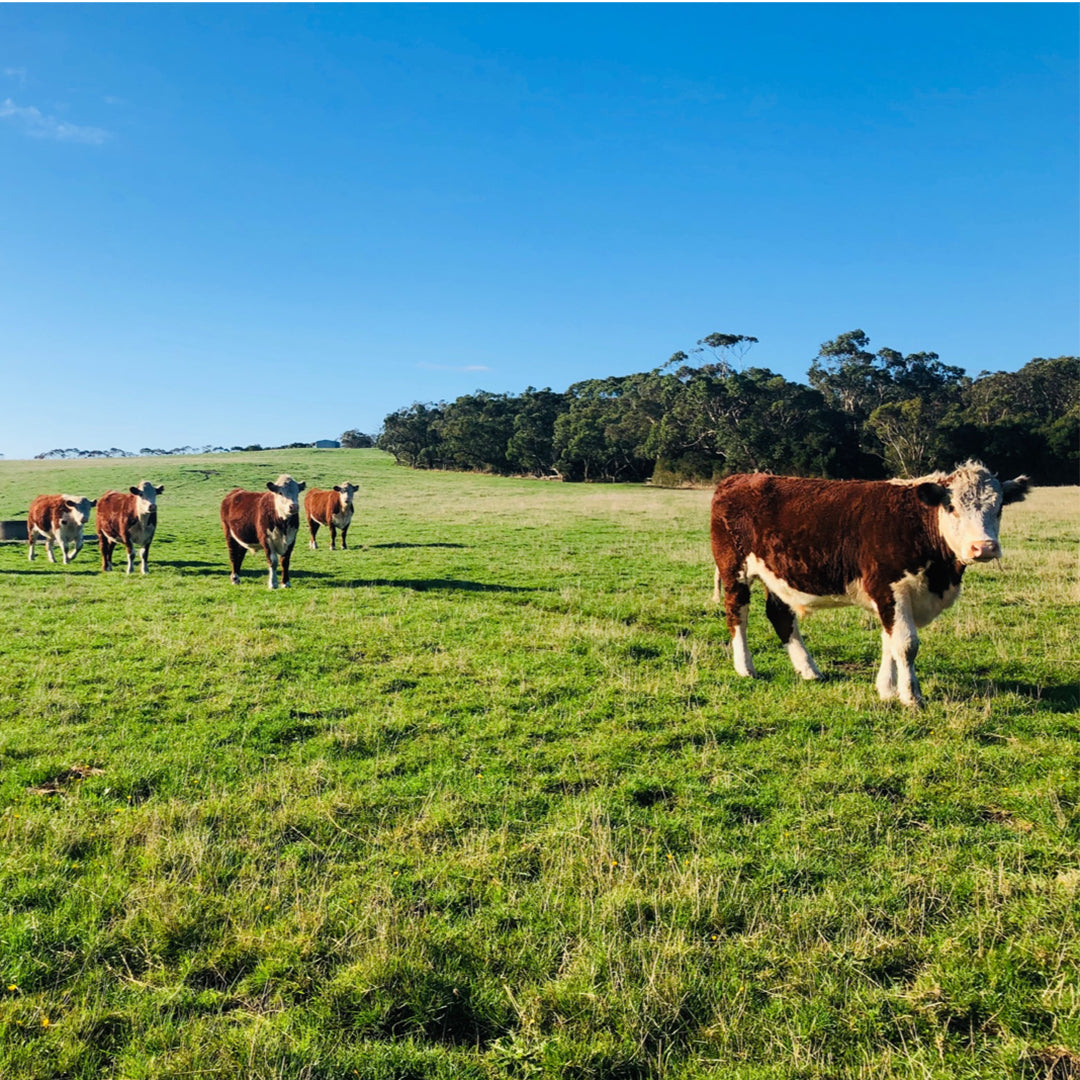Constance Cattle Chronicles: Stories from Breeders and Farmers on Their Successes and Challenges
Constance Cattle Chronicles: Stories from Breeders and Farmers on Their Successes and Challenges
Blog Article
Master the Art of Food Preparation With Turf Fed Meat
In the world of culinary know-how, understanding the art of cooking with grass-fed meat holds a distinguished placement. From the tender structure to the durable flavor account, grass-fed meat offers a canvas for culinary creativity.
Benefits of Grass-Fed Meat

When choosing grass-fed meat, customers can gain from its higher degrees of omega-3 fatty acids and antioxidants contrasted to conventionally elevated meat. Constance Cattle. Omega-3 fats are important nutrients that support mind health, lower inflammation, and advertise heart health. Grass-fed meat is understood to have up to five times much more omega-3 fats than grain-fed meat, making it a healthier option for those wanting to enhance their intake of these helpful fats
In addition to omega-3 fatty acids, grass-fed meat is additionally richer in anti-oxidants such as vitamins E and C, in addition to beta-carotene. Antioxidants play a critical function in protecting cells from damages triggered by complimentary radicals, which can contribute to numerous chronic illness and increase aging. By choosing grass-fed meat, customers can not only delight in a more nutrient-dense and tasty healthy protein source but additionally support their total health and wellness and wellness.
Including grass-fed meat right into your diet regimen can be a simple yet effective method to boost your dietary consumption and gain the advantages of omega-3 fatty acids and antioxidants that are naturally plentiful in this sort of meat.
Best Food Preparation Approaches
Using ideal cooking approaches is necessary to preserve the nutrient profile and improve the taste of grass-fed meat. When cooking grass-fed meat, it is necessary to bear in mind that it is leaner than conventionally increased meat, making it extra vulnerable to drying if overcooked. To guarantee a juicy and flavorful result, think about cooking grass-fed meat at a little lower temperatures than you would with grain-fed meat.
Barbecuing is a popular approach for cooking grass-fed meat as it enables excess fat to leak away, preventing flare-ups that can cause charring. When grilling grass-fed meat, use medium heat and keep a close eye on it to stop overcooking. One more excellent cooking approach for grass-fed meat is pan-searing. This method aids secure in the juices and develop a delicious crust on the meat.
Sluggish cooking strategies such as braising or cooking are additionally exceptional options for harder cuts of grass-fed meat, as they aid damage down the muscular tissue fibers and soften the meat. Whichever food preparation technique you select, keep in mind to allow grass-fed meat rest after cooking to allow the juices to rearrange, making sure a moist and tender last meal.
Taste Pairings and Seasonings
To improve the natural flavors of grass-fed meat, strategic taste pairings and flavorings play a vital function in raising the general dining experience. Grass-fed meat has an abundant, distinctive preference that can be enhanced and improved by meticulously selected active ingredients. When it involves taste pairings, herbs like thyme, rosemary, and oregano job remarkably well with grass-fed beef, lamb, or bison. These herbs include deepness and earthiness to the meat, boosting its all-natural flavors without overpowering them.
Along with natural herbs, spices pop over to these guys such as black pepper, garlic, and smoked paprika can further raise the taste profile of grass-fed meat dishes. These spices provide a balance of warmth, sweet taste, and smokiness that can enhance the general dining experience. When flavoring grass-fed meat, it is important to use premium salt, like sea salt or Himalayan salt, to draw out the meat's flavors without adding unneeded chemicals or additives.
Storage Space and Managing Tips
Correct storage and handling practices are vital for maintaining the top quality and freshness of grass-fed meat. When storing grass-fed meat, it is crucial to maintain it refrigerated at temperature levels below 40 ° F(4 ° C) to avoid bacterial development and perishing. To prolong the meat's shelf life, think about wrapping it snugly in parchment paper or butcher paper prior to placing it in an impermeable container or sealed plastic bag - Constance Cattle. Avoid saving grass-fed meat near strong-smelling foods as it can absorb smells quickly.
When dealing with grass-fed meat, it is very important to practice great hygiene to avoid cross-contamination. Wash your hands extensively before and after handling the meat, and make sure that all tools and surfaces that enter into call with the meat are cleaned and disinfected appropriately. Additionally, make use of different cutting boards for meat and vegetables to prevent microbial transfer.

Top Grass-Fed Meat Recipes
When considering the best methods to savor the quality and freshness of grass-fed meat, exploring first-class dishes can boost your culinary experience. Grass-fed meat's abundant taste and leaner account lend themselves well to a range of dishes that highlight the all-natural benefits of the meat. One leading recipe to attempt is a classic Grilled Grass-Fed Ribeye Steak skilled with straightforward ingredients like salt, pepper, and a touch of garlic for a robust taste. For official site a soothing dish, a Slow Cooked Grass-Fed Beef Stew with root vegetables and aromatic herbs is a hearty option that draws out the meat's tenderness.
If you're in the mood for something lighter, a Grilled Grass-Fed Burger served with fresh garnishes and a side of sweet potato fries is a delicious selection. Furthermore, a Herb-Crusted Grass-Fed Lamb ribs roasted to perfection with a collection of breadcrumbs and natural herbs is a show-stopping dish for special celebrations. These leading grass-fed meat recipes display the versatility and exceptional quality of grass-fed meat, allowing you to appreciate its premium preference in various cooking productions.

Verdict
Finally, grasping the art of food preparation with grass-fed meat provides many benefits, including enhanced nutritional value and superior flavor. By utilizing the most effective cooking techniques, exploring with flavor pairings and seasonings, and adhering to proper storage space and taking care of tips, you can create nutritious and delicious meals. Experiment with some leading grass-fed meat dishes important source to raise your culinary abilities and delight in the full potential of this high-grade ingredient.
When cooking grass-fed meat, it is vital to bear in mind that it is leaner than conventionally increased meat, making it extra prone to drying out if overcooked. To make certain a juicy and delicious result, think about cooking grass-fed meat at a little reduced temperatures than you would certainly with grain-fed meat.
When seasoning grass-fed meat, it is crucial to utilize high-grade salt, like sea salt or Himalayan salt, to bring out the meat's tastes without including unneeded chemicals or ingredients.
Grass-fed meat's abundant taste and leaner account provide themselves well to a range of dishes that highlight the all-natural goodness of the meat. These top grass-fed meat dishes showcase the convenience and premium quality of grass-fed meat, permitting you to appreciate its premium preference in different culinary developments.
Report this page